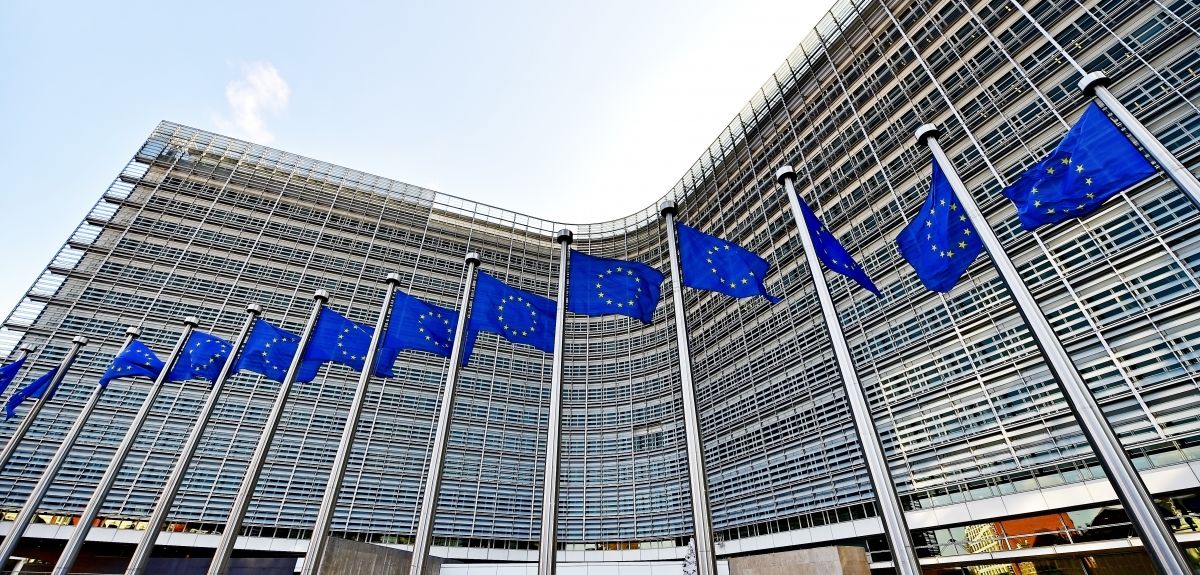
Image credit: Shutterstock
Regional inequalities within the EU 'have declined over the past 35 years'
New research from the University of Oxford and UFZ Helmholtz Centre for Environmental Research in Germany shows the gap between Europe's haves and have-nots has been narrowing over the past 35 years.
The paper, a major comparative study of European urban and regional growth patterns, reveals that since 1980 cities and regions across the EU have been converging economically, becoming increasingly similar in per capita incomes and real growth rates.
Study co-author Dr Vlad Mykhnenko, Associate Professor of Sustainable Urban Development at Oxford, said: 'Over the past 35 years we have witnessed a profound rise in gross domestic product and real income across Europe's poorest cities and regions, which have been catching up fast with the rest of the EU. Regional incomes and economic activity are much more evenly spread across the continent now than they were in 1980, at whatever regional level or part of the EU one chooses to look at.'
The study, which looked at the period 1980-2015 and is published in the journal Regional Studies, finds that:
- The aggregate decline in regional income inequalities across 28 EU member states (EU-28) from 1980-2015 amounts to at least 7.2%. This refers to the average spread of regional gross domestic product (GDP) per capita across the EU, meaning regional per capita levels across Europe are over 7% more similar today than they were in 1980.
- Europe's regional convergence trends have become much stronger since 2000, coinciding with the eastward enlargement of the EU. Between 1995 and 2015, the gap in regional GDP per capita levels decreased by 10.6% on average.
- The reported decline in regional economic disparities in the EU-28 was the second highest in the world when compared with Europe's 11 major international counterparts, including the European Free Trade Association (EFTA, consisting of Iceland, Liechtenstein, Norway and Switzerland), the North American Free Trade Agreement area, and emerging market economies such as Brazil, India and China. Between 2000 and 2015, the gap in regional GDP per capita in the EU dropped by as much as 7.4%, second only to a 9.7% drop in regional disparities across mainland China. During the same period, regional economic disparities increased substantially across other areas (including 16.7% in Russia and 3.6% in the United States).
Study co-author Dr Manuel Wolff, from UFZ Helmholtz Centre for Environmental Research, said: 'Regional convergence is predicted by a number of theoretical models of economic growth, and the empirical evidence we have gathered is unequivocal. Over the last decade alone, Europe's newest and poorest member states have been growing 3.3 times faster than the rest of the EU. They have been able to attract foreign direct investment at a rate 7.6 times faster than the EU's older and wealthier regions.
'At the same time, Western Europe's high-wage, capital-rich regions and cities were able to attract much-needed labour resources from the labour-rich, low-wage regions and cities in the East, benefiting local businesses and consumers.'
According to the authors, the second driver of Europe's long-term convergence has been the EU-wide regional cohesion policy. European regional public investment instruments have grown from €75 billion to €454 billion between 1989 and 2020, with 73% of the total amount going to the poorest regions and cities in the East and South. As workers move westwards, the researchers say, their home cities have to adjust to a smaller labour pool while continuing to attract private capital and public investment from the West.
Dr Mykhnenko added: 'Europe's remarkable progress in economic convergence is due to a combination of free markets and government intervention in the form of active regional policy, targeting state assistance to the lagging regions and cities.
'Our research has clear ramifications for the ongoing Brexit debate. Contrary to some caricatures of "Brussels" as a bureaucratic, crypto-socialist juggernaut stifling growth, our research suggests that it is the EU’s single market, with its four freedoms of movement of labour, capital, goods and services, that has propelled faster economic growth and catching-up across the continent.'
The research was funded by the Joint Programming Initiative Urban Europe and the UK Economic and Social Research Council's project 3S RECIPE ('Smart Shrinkage Solutions – fostering REsilient Cities in Inner Peripheries of Europe').
 New Year Honours 2026
New Year Honours 2026
 New study estimates NHS England spends 3% of its primary and secondary care budget on the health impacts of temperature
New study estimates NHS England spends 3% of its primary and secondary care budget on the health impacts of temperature
 International collaboration launches largest-ever therapeutics trial for patients hospitalised with dengue
International collaboration launches largest-ever therapeutics trial for patients hospitalised with dengue
 Oxford-built multi-agent assistant for cancer care to be piloted in collaboration with Microsoft
Oxford-built multi-agent assistant for cancer care to be piloted in collaboration with Microsoft